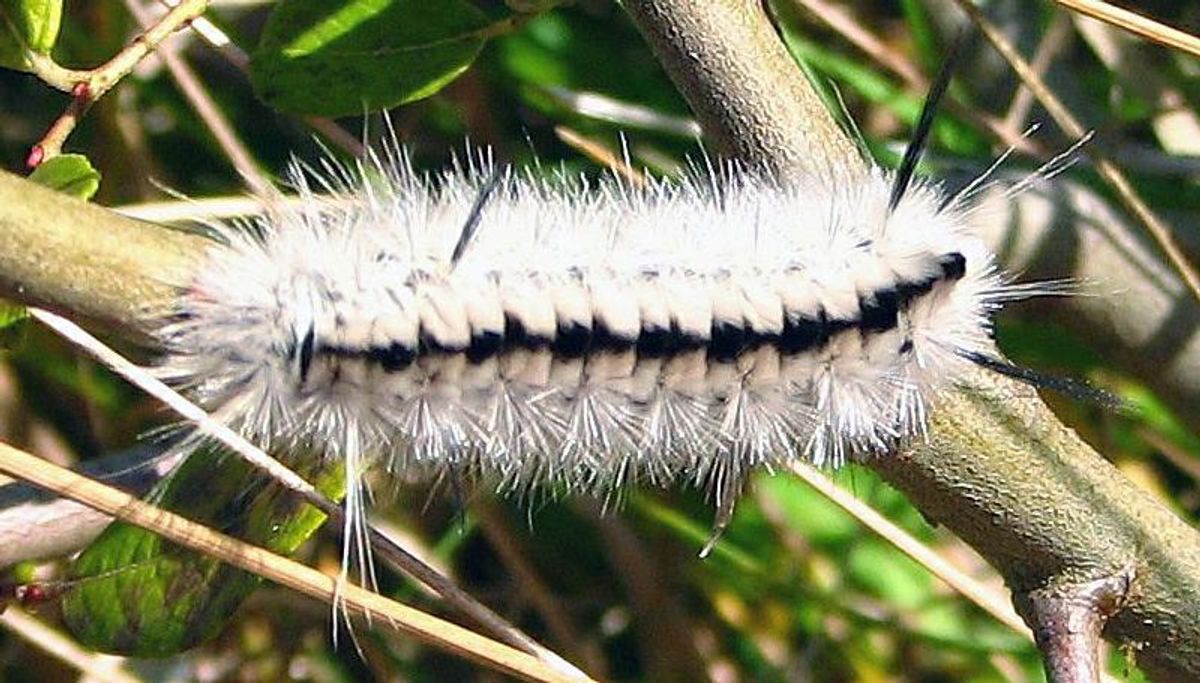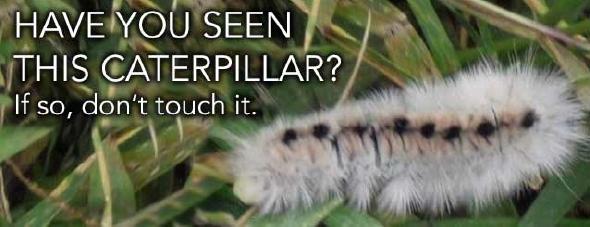In August 2011 a warning began circulating online, decrying an insect known as the White Hickory Tussock Moth Caterpillar, which is native in Canada from
Little white and black caterpillars all over are POISONOUS. they are apparently new to the area..... doctors say there has been numerous kids having reactions to them. the rash spreads fast. the caterpillars have long white hairs that embed in skin and send poison through out the body. DO NOT TOUCH and DO NOT LET YOUR KIDS TOUCH!!! they look cute and fuzzy and THEY ARE NOT! Please repost to everyone you know with little kids!!
This caterpillar appears between June and September and munches its way through the leaves of deciduous trees (it prefers
The caterpillar excretes a type of chemical defense upon contact (which is more properly termed 'allergenic' than 'poisonous'). Most people who handle these creatures will experience a burning, nettle-type, itchy rash of mild to moderate severity, but washing the affected area with soap and water, then applying ammonia or calamine lotion and icing the area should set things to rights. However, some people are hypersensitive to the poison and have allergic reactions to it -- in addition to the itchy rash, those persons are likely to experience more severe symptoms such as swelling and nausea and should seek expert medical advice as soon as possible:
The hairs on the caterpillar are long and bristle-like and spread out in tufts down the sides. Two long, sharp, black pencil-like hairs protrude near the front and rear of the creature, and these hairs are connected to poison glands, which excrete venom on contact.
Contact with the venom does not generally cause too much of a problem. A nettle or poison ivy-type rash often occurs, which can range from mild with slight reddening of the skin, to burning, swelling and pain, none of which should keep you away from your gardening duties for too long. Hypersensitive individuals may, of course, experience more severe symptoms that could include swelling and nausea. Washing the infected area with soap and water, taking antihistamines, or using ammonia, calamine lotion, or an ice pack can help to alleviate most minor symptoms fairly quickly. People who do experience more severe reactions, however, should seek expert medical advice as soon as possible.


